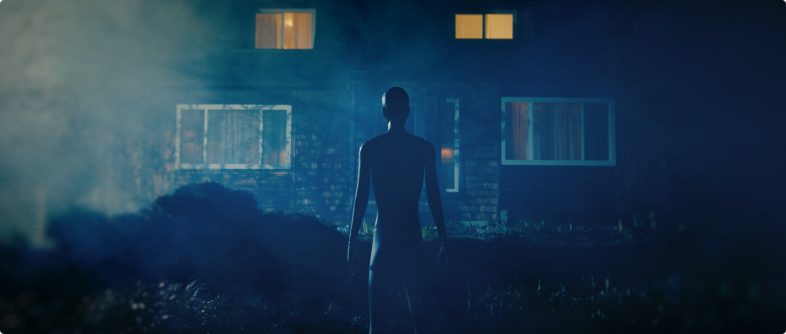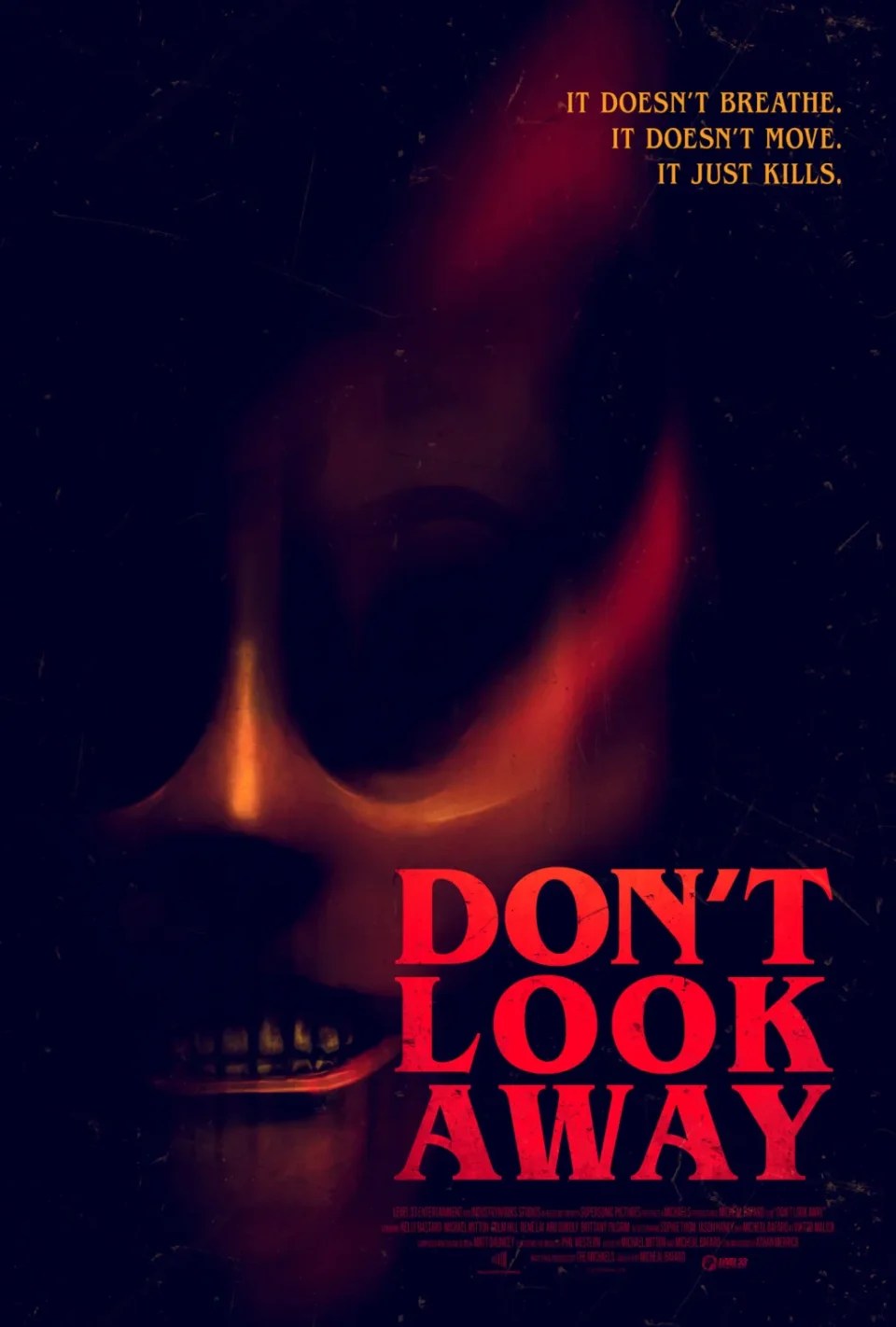‘Don’t Look Away’ Cinematographer Athan Merrick On Capturing Evil in a Hollow Mannequin

When outside of the horror genre, one would never have a negative association with a doll or mannequin. But when they’re in a horror film, all bets are off, thanks to movies such as Tourist Trap, Maniac, Child’s Play, Puppet Master, and Annabelle. Michael Bafaro’s new film Don’t Look Away can also be added to this list.
In the film,
After a gang of criminals unintentionally unleashes a supernatural force onto the world, a young woman named Frankie is convinced she’s being stalked by a killer mannequin. Frankie soon realizes that her friends are in jeopardy too. She must find the man who holds the key to stopping the killings, but Frankie knows that once you see the mannequin, there may be no end in sight, except for your own.
Behind the scenes of Don’t Look Away, the main obstacle for the filmmakers became how to transform a non-moving, hollow mannequin into a menacing killer viewers would truly fear. The solution? Lighting, camera angles, quick cuts, and mind games. In the below interview, the film’s Director of Photography Athan Merrick (Nations at War, Shadow of the Rougarou) breaks down everything from his giallo inspiration to the toughest scene to shoot.
Dread Central: Don’t Look Away was inspired by the video game Stay Close. Were you familiar with that game before you began work on the film?
Athan Merrick: I was not familiar with the game, totally new to me.
DC: Did you have any discussions with director Michael Bafaro about Stay Close and what elements he wanted to incorporate?
AM: We did not discuss the video game at all. We did discuss a lot of giallo stylistic elements. Giallo refers to the Italian psychological horror films from the 1970s.
DC: Without giving too much away, there is a scene where someone falls from the sky. Can you talk about shooting that sequence? How many times did you have to do it?
AM: That scene was in a busy Chinatown district, so controlling people moving on the street was probably the toughest part for the producers and PAs. At the end of that scene, one character gives a pretty good scream. There were quite a few takes of that and you had lots of onlookers craning their necks and thinking, “What the hell is going on over there?” With any kind of complicated sequence whether it involves a stunt or VFX, everyone has to be on the same page about what needs to be captured for the edit to work in the right way. Thankfully director Micheal Bafaro sees the edit in his head and can communicate effectively to the crew.
DC: Were there any happy accidents when shooting Don’t Look Away?
AM: I think the biggest happy accident was Drake, played by Abu Dukuly. He was just a guy The Michaels [co-writers Michael Bafaro and Michael Mitton] spotted in town and they decided to give him a shot at a role in the film after chatting with him. When I heard he had no acting experience I was obviously skeptical. But he has a screen presence and surprised me on camera with his natural talent for it. There was certainly some film lingo on set that he was confused by at first, but he caught on quickly.
DC: The mannequin plays an important part in the film. Can you talk about the approach to shooting this? What did you find was key to making the mannequin look menacing?
AM: There are certain times in the film we wanted the mannequin to be clearly seen, but for the most part, we followed some simple rules we set out in pre-production. We wanted isolation and depth and lots of silhouettes. For the isolation and depth, we would purposefully put the mannequin far in the distance on its own. Those elements combine to make the viewer subconsciously want to get a better look. They are straining their mind, which raises the tension.
DC: What was the most difficult shot for you in Don’t Look Away? Why?
AM: One of the most difficult shots surprisingly was the swimming scene. It sounds silly, but we could not get the mannequin to sink or stand in the water. It always wanted to float. This is something we had not anticipated. The mannequin was 3D printed and hollow. We loaded the mannequin with dive weights, and weight belts, and sandbags and it still would not sink. Eventually, we had to drill a ton of holes in it on the day to get it to stand in the water.
DC: Can you discuss the lighting in the film? There weren’t many scenes with extremely bright light. Was this on purpose?
AM: Absolutely. Darkness is key to match the mood of the characters and to elicit the emotional response you want from the audience. But for darkness to play dark you need areas of light. The areas of light make the dark feel darker. Slits of light. Pools of light amongst the dark. We further enhance that darkness by taking away as much light as possible with negative fill. With that said, my philosophy is to light the location rather than specific characters or specific shots for a scene. I can’t always follow that rule because circumstances don’t always allow it, but that’s the goal most of the time. That gives the actors and director freedom to improvise and move throughout the space and I find that leads to better performances and happier crew and producers.
DC: What is your favorite part of working on a horror project?
AM: There’s a suspension of reality in the audience right from the start, which means the film and the cinematography can be mind-bending and supernatural. I’m really looking forward to pushing things much further on the next horror film I get to shoot!
Don’t Look Away is in theaters now and coming to VOD on October 3, 2023.

Categorized:Interviews

